Everything You Need to Know About Surfing in American Samoa
American Samoa is the best-kept secret of surfing in the South Pacific (and you've probably heard that a thousand times but this is one of the least-visited destinations in the South Pacific with only 890 visitors in 2020).
As a result, you have heavy hollow waves all to yourself, yet organising a surf trip requires a bit more planning since there's no established surf infrastructure: no surf camps, board hire or dedicated surf operators on the islands.
What's more, surf customs with the local villages are a bit of a hurdle; there are sometimes customary beach fees to pay, while surfing is not advised on Sundays out of respect for local customs.
Needless to say, the surf scene requires more self-sufficiency if you're going out on your own. You'll need to arrange your own transport to breaks and navigate local protocols independently, but the reward is having some of the most pristine, uncrowded waves in the Pacific entirely to yourself.
So, plan the ultimate off-the-beaten-path surf adventure in the South Pacific with this guide to surfing in American Samoa!
Table of Contents
5 Essential Tips for Surfing in American Samoa
Before we jump into the guide, here are just a few quick tips and things you need to know about surfing in American Samoa:
- Surfing in American Samoa is only suitable for intermediate to advanced surfers - you need to at least be able to comfortably pull into a barrel wave.
- There are no surf operators in American Samoa, so equipping yourself and finding suitable waves is all down to you.
- Ask permission before surfing at any village beach - beaches are owned by local families.
- Don't go surfing near villages on a Sunday in order to respect the local customs.
- Bring your own gear and backups! There is no opportunity to hire boards, buy surf wax, etc., so bring everything you will need.
As long as you keep all of the above in mind, you're sure to have a blast surfing American Samoa's amazing waves. For more general tips for visiting American Samoa, make sure you also take a look at the 30 Tips for Travelling in American Samoa.
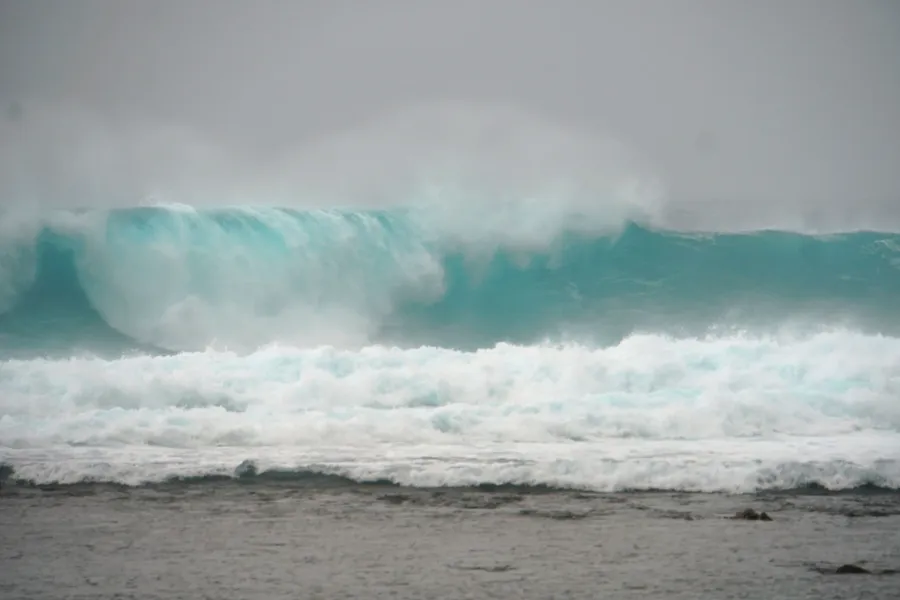
When to Surf: The Best Seasons for Surfing in American Samoa
American Samoa has two distinct seasons, the dry and the wet seasons, which each bring their own characteristics to the surf scene.
Dry Season
The dry season runs from May to October and is the most popular time for surfers to head to American Samoa, not only because there’s a lesser chance of rainfall compared to the wet season but because wave conditions tend to be slightly more consistent for American Samoa’s most popular surf spots along the south coast.
Air temperatures can be anywhere between 24 and 29°C (75 and 84°F) and the water temperatures are at tropical temperatures of 28-29°C (82-84°F).
May to October is also American Samoa’s driest season, which means more sunny days and fewer rainy days (not that the rain provides too much reason to stop surfing).
One aspect of winter that does affect surfers, however, is the large southeast and southwest swells that sweep across American Samoa. This is when American Samoa experiences the most consistent surf waves rolling in.
On the downside, however, tradewinds take over in the afternoons, which can spoil some of the waves. Usually, getting on it early still means you get some good surf in.
Wet Season
The wet season in American Samoa runs from November to April, but it is often agreed that it’s between February and April that brings the best wet season surf conditions with dwindling tradewinds combined with prevailing swells originating from the North Pacific.
Although swells are generally not as big as in the dry season, they still run high enough for most; head to overhead range. What’s more, the swells from the north often open up the northern surf breaks of the islands.
As for the weather, the wet season in American Samoa typically sees temperatures of 24-30°C (75-86°F) and sea temperatures of 29°C (84°F).
UV levels are high, giving you another reason (apart from the sharp coral and lava rocks) to wear your wetsuit.
Unsurprisingly, rainfall is much more frequent during the wet season compared to the dry season.
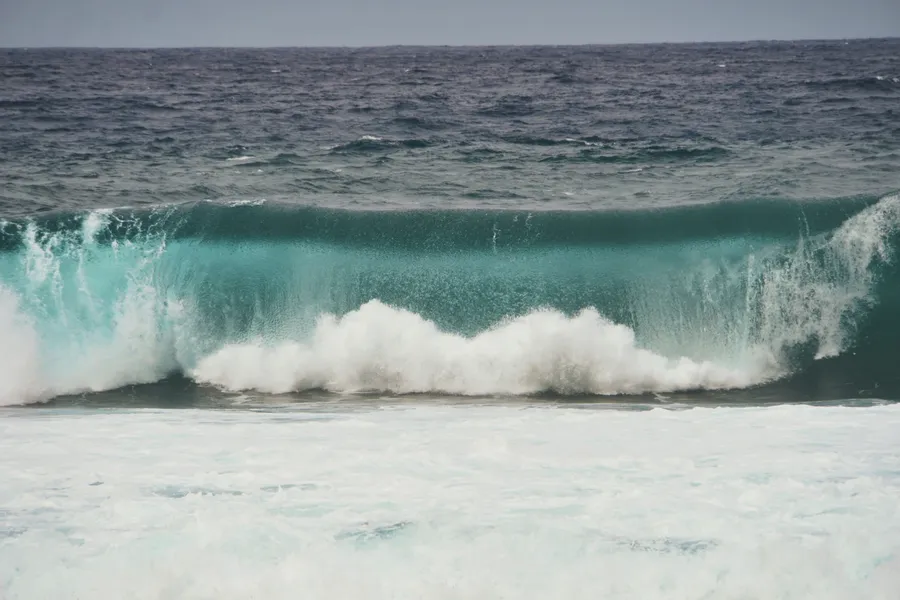
Where to Surf: Surf Breaks in American Samoa
American Samoa's surfing scene is one of the South Pacific's best-kept secrets. According to locals, there are around 25 established waves scattered around the islands, with the best breaks found around the main island of Tutuila.
Here's what you need to know: there are no surf camps or official surf guides here. But don't let that put you off! Connecting with locals and boat operators is your best bet for finding the right knowledge and getting pointed towards the perfect waves.
Surfing in Pago Pago (Tutuila)
Home to Pago Pago International Airport, Tutuila is by far the easiest island in American Samoa to reach. As the most developed island in the territory, it's reasonably well-equipped for planning a proper surf holiday.
The best surfing can be found at the reef break at Faganeanea, though it's completely unrideable when the trade winds are blowing and the tides aren't cooperating.
We've found that surf breaks in Tutuila are refreshingly easy to locate; they're simply named after nearby landmarks or villages. A quick search on an online map will give you a good starting point.
Here are some surf breaks worth investigating:
- Asili Point - Works best with a southerly swell and offshore winds from the north. You'll find relatively reliable waves here.
- Amanave Bay - This beach and reef break delivers its best conditions when a southwest swell combines with offshore winds from the east. Expect consistent conditions.
- Faganeanea - Prime conditions occur when a south swell meets offshore winds from the northwest. The conditions can be patchy, but when it's on, it's absolutely worth it.
- Poloa - Look for north swells combined with offshore winds from the south-southeast. The waves here can be inconsistent.
- Nu'uuli "CoralHead" - Best surfed when southeast swells combine with offshore winds from the west. Another spot with inconsistent waves.
- Tula - Located on the eastern point of Tutuila, this spot typically offers 0.6-1.2 m (2-4 ft) surf and remains surfable on consistent south swells.
- Alofaʻu - You'll find good conditions in the bay near Alofaʻu village.
- Alega - Get a day pass for the private beach from Tisa's Barefoot Bar, and your hosts can point you to the best breaks.
Finally, for those interested in windsurfing, Pago Pago Harbor offers strong winds funnelling through the bay, though you'll need to watch out for boat traffic.
Ready to plan your surf adventure to American Samoa's main island? Check out The Complete Travel Guide to Tutuila for everything you need to know.
Surfing in the Manu'a Islands
The Manu'a Islands sit 62 mi (100 km) to the east of Tutuila, made up of bridge-connected Ofu and Olosega, as well as Ta'ū Island.
Honestly, we don't recommend these islands specifically for surfing. Ofu requires very specific conditions and a fair bit of patience. Your best bet would be off Ofu village on the northwest coast of Ofu Island, or along the stretch of reef in front of Olosega Village on Olosega Island. On our last visit, we saw some pumping surf from the eastern end of the beach near the Oge Beach Trail.
As for Ta'ū, we haven't heard of anyone making the trip there specifically for surfing.
That said, if you're keen to explore these islands for their gorgeous beaches, authentic culture, or simply for the adventure, you'll want to read The Complete Travel Guide to the Manu'a Islands.
%20CREDIT%20AmericanSamoaPocketGuide.com-900x600.webp?v=2025-08-25T02%3A02%3A31.631Z)
A Note About Paying Your Beach Fees
Here's something we've learned from our time in American Samoa: respecting local customs around beach access is absolutely essential, and it's actually quite straightforward once you know what to expect.
Most of the surf breaks you'll want to hit are accessed through family-owned or local beaches, and it's customary to pay a small fee to the landowners. Don't worry though; this isn't some complicated bureaucratic process!
Simply chat with locals or knock on someone's door (yes, this is completely normal). You'll quickly be pointed towards the right person to speak with, and they'll sort you out in no time.
The fees are quite reasonable, typically ranging from free (some generous locals won't charge anything) to US$2-$10 per person. Tisa's Barefoot Bar at Alega Beach is the exception, typically being more expensive, but it's best to get in touch with them for a quote.
Avoid surfing at community beaches on Sundays. This is when families gather for rest and worship, so it's best to plan your surf sessions for other days of the week.
For more insights into local customs and etiquette, check out our American Samoan Etiquette: American Samoa Customs & Traditions guide.
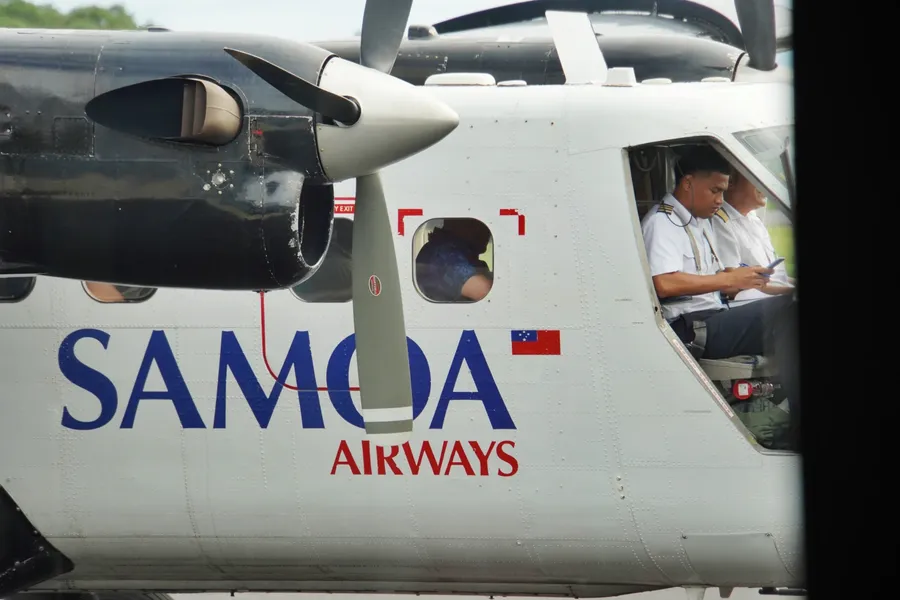
Surfboard Hire, Surf Shops and What to Pack
Erm, well, this is awkward. We absolutely recommend that you bring your own surfing gear to American Samoa. As far as we know, there is no surfboard hire in American Samoa. There's also no surf shop either. With this in mind, we also recommend bringing your own backup gear too.
In addition, if you're coming from Apia in Independent Samoa, be sure to fly with Samoa Airways and check in your surfboards as early as possible before your flight. In contrast, Talofa Airways does not allow surfboards to be checked in on their smaller planes.
What to Pack for Surfing in American Samoa
- 1 all-rounder surfboard
- 1 fish or semi-gun surfboard
- 1 reef shoes/booties
- 1 or 2 rash vests (we like sustainable Sharkskin rashies)
- 2 bottles of reef-safe sunscreen (see our Best & Reef-Safe Sunscreens)
- Tropical wax
- Ding repair kit
- Extra fins
- Board bag
And for the rest of your American Samoa packing list, take a look at What to Pack for American Samoa: American Samoa Packing List.
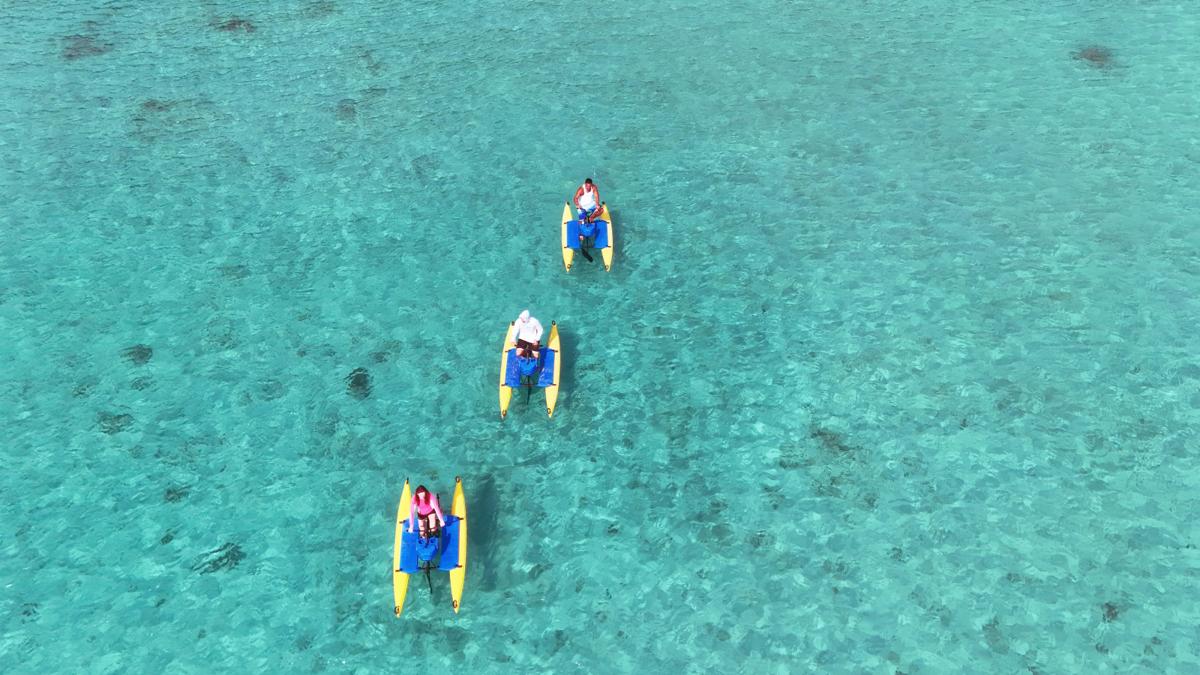
Editor's Choice
Adventures Unlimited
Discover Pago Pago Harbor like never before on our unique waterbike adventure! Pedal across sheltered waters on innovative twin-hull waterbikes that keep you perfectly stable while we explore...

Travel Planning for Surfers in American Samoa
Planning a surf trip to American Samoa requires a bit more DIY spirit than other destinations. You won't find dedicated surf camps or operators here, but that's part of the charm: you get to carve your own adventure.
Here's what we've learned from our own experiences to help you plan the perfect surf getaway.
Where to Stay in American Samoa for Surfers
Most accommodations cluster around Pago Pago, the capital, which isn't exactly prime surf territory. But we've found a gem that puts you in the perfect position for wave hunting.
Tisa's Eco-Fales at Alega Beach is well worth booking if you can get a spot. The beach itself offers reasonable waves when the conditions are right - Tisa's son surfs and can show you the ropes when he's around. Plus, you'll be perfectly positioned to explore the east side's hidden breaks around Faganeanea, Tola and Alofaʻu.
For more accommodation options, check out our Where to Stay in American Samoa: 15 Best Accommodations guide.
How to Get Around American Samoa
Getting around Tutuila with your surfboard is surprisingly straightforward. Car rentals are your best bet; perfect for hauling boards and gear to remote breaks.
The local ʻaiga buses are an adventure in themselves (locals will definitely get a kick out of seeing you squeeze a surfboard on board), but avoid the morning and school runs when space is limited.
Island hopping requires a bit more planning. You can catch weekday domestic flights or hop on the fortnightly ferry, though both charge extra for surfboards.
For all the transport details, dive into our American Samoa Transport Guide: 15 Best Ways to Get Around American Samoa.
More About Surfing in American Samoa
That's it for our ultimate guide to surfing in American Samoa! Although we've hit many of these links already in this American Samoa surf guide, here's a quick reminder of some tips you might be interested in:
- 10 Best Swimming Spots in American Samoa
- 10 Best Beaches in American Samoa
- The Complete Travel Guide to American Samoa
Finally, when you're not surfing, make sure you tick some of these off the 101 Best Things to Do in American Samoa: The Ultimate List.


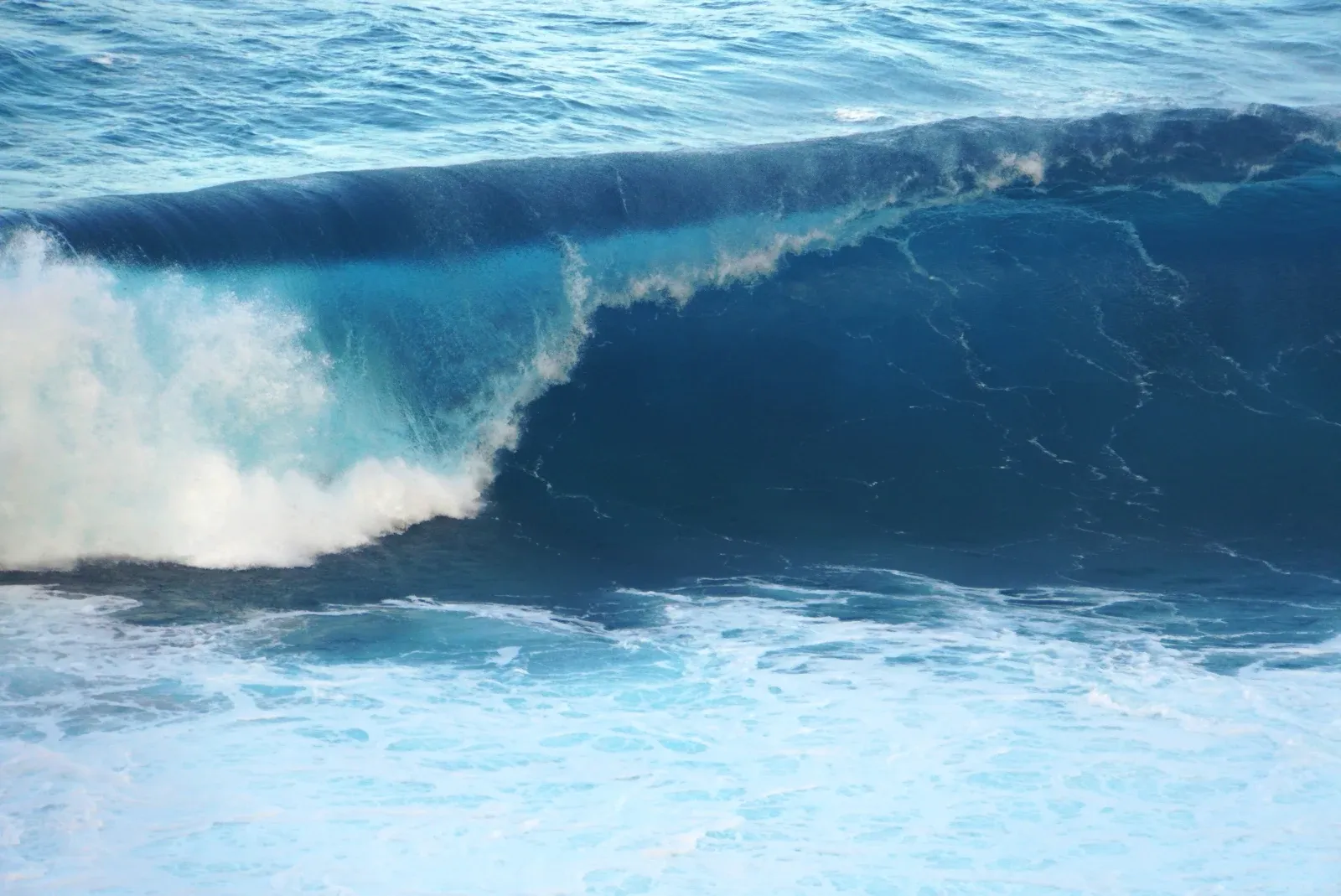

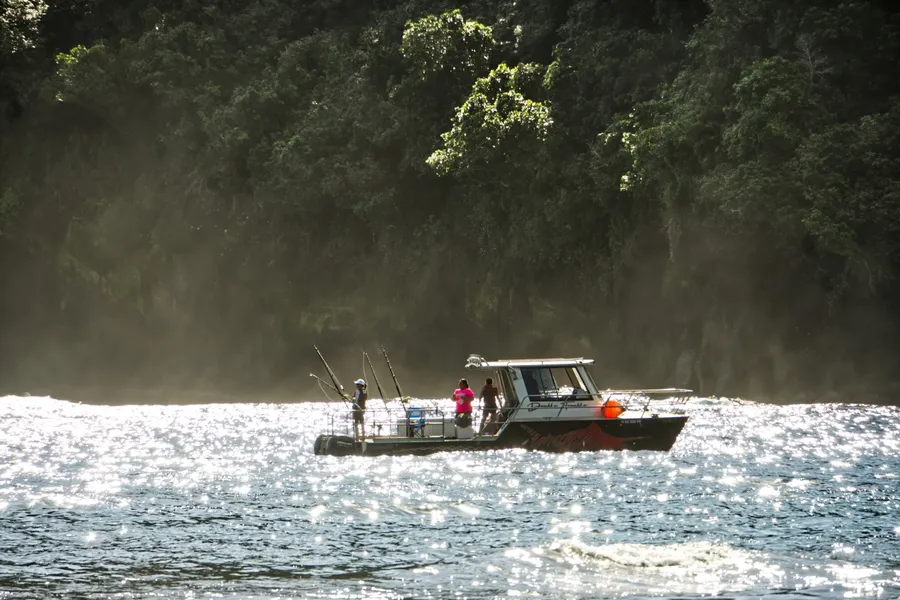
%20CREDIT%20AmericanSamoaPocketGuide.com-900x600.webp?v=2025-09-14T20%3A12%3A37.565Z)